blood wedding pdf
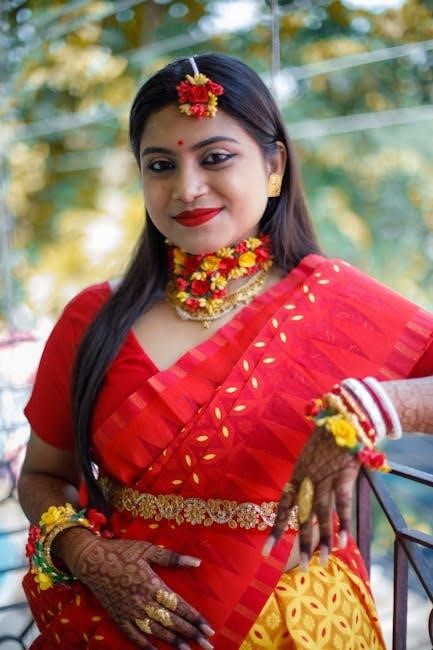
Federico García Lorca’s Blood Wedding is a tragic play exploring themes of love‚ fate‚ and violence. Available as a PDF‚ its lyricism and dramatic depth captivate readers globally.
1.1 Overview of the Play
Federico García Lorca’s Blood Wedding is a tragic play set in rural Spain‚ blending folklore with intense drama. It explores themes of love‚ fate‚ and violence‚ culminating in a devastating conclusion. The play’s rich cultural elements and poetic language highlight the clash between tradition and passion‚ making it a powerful exploration of human emotions and societal constraints.
1.2 Historical Context of Blood Wedding
Blood Wedding is set in rural Spain‚ reflecting the societal norms of the early 20th century. Lorca explores themes of tradition‚ family honor‚ and arranged marriages‚ prevalent during this period. The play‚ written in 1932‚ mirrors the tensions of pre-Civil War Spain‚ blending folklore with a tragic narrative. Its portrayal of women’s roles highlights the oppressive gender norms of the time‚ adding depth to its historical and cultural backdrop.
1.3 Significance of the Title “Blood Wedding”
The title Blood Wedding symbolizes the tragic fusion of love and violence. It foreshadows the doomed union and the bloodshed that ensues‚ reflecting the destructive nature of unresolved passions and societal constraints. The phrase underscores the play’s exploration of fate‚ sacrifice‚ and the inevitable clash of desire with duty‚ setting a haunting tone for the narrative’s unfolding tragedy.

Plot Summary of Blood Wedding
Federico García Lorca’s Blood Wedding is a tragic tale of forbidden love‚ fate‚ and violence in rural Spain‚ culminating in a devastating and bloody conclusion.
2.1 Act I: The Bridegroom’s Home
Act I unfolds at the Bridegroom’s home‚ showcasing preparations for the wedding. The Bridegroom and his Mother discuss the upcoming union‚ while the Bride‚ at her home‚ expresses doubts. The scene introduces tension as the Bride’s former lover‚ Leonardo‚ is hinted at‚ foreshadowing tragedy. The atmosphere is thick with anticipation and underlying conflict‚ setting the stage for the inevitable clash of fate and desire.
2.2 Act II: Leonardo’s Home
Act II shifts to Leonardo’s home‚ where tensions escalate as the Bride and Leonardo confront their forbidden passion. The evening setting amplifies the emotional turmoil‚ with the Bride torn between duty and desire. Leonardo’s wife observes the tension‚ adding to the suspense. The act builds on the ominous undercurrents of fate‚ as the characters’ actions inch closer to the tragic confrontation that will seal their destinies.
2.3 Act III: The Tragic Conclusion
Act III unfolds in a forest‚ where the Bride and Leonardo’s forbidden encounter leads to a devastating confrontation. The Bridegroom discovers them‚ and a violent clash ensues‚ resulting in the deaths of both men. The Bride‚ covered in blood‚ returns to her home‚ symbolizing the irreversible tragedy. The act concludes with a sense of inevitability‚ as fate and passion collide‚ leaving destruction and grief in their wake.

Major Themes in Blood Wedding
The play explores themes of love vs. duty‚ fate and destiny‚ and revenge and violence‚ weaving a tragic narrative of human emotions and societal constraints in rural Spain.
3.1 Love vs. Duty
The clash between romantic love and societal obligations drives the narrative. The Bride‚ torn between her arranged marriage and her passion for Leonardo‚ embodies this conflict. Duty‚ imposed by tradition and family expectations‚ stifles personal desire‚ leading to tragic consequences. This theme underscores the tension between individual longing and communal norms‚ a central struggle in Lorca’s exploration of human emotion and societal pressures.
3.2 Fate and Destiny
Fate and destiny are central themes‚ as characters are trapped in a cycle of inevitable tragedy. Lorca uses symbolic elements like the moon to signify impending doom‚ emphasizing the inescapability of their destinies. The play reflects a deterministic view of life‚ where decisions are driven by uncontrollable forces rather than free will. This underscores the fatalistic tone‚ as the characters’ paths converge toward a bloody‚ irreversible conclusion.
3.3 Revenge and Violence
Revenge and violence are pivotal‚ driving the tragic narrative. The feud between families escalates into bloodshed‚ symbolized by the moon’s knife‚ highlighting inevitability. Lorca explores how societal expectations fuel vengeance‚ leading to destruction. The play’s violent climax underscores the cyclical nature of revenge‚ as characters are consumed by their relentless pursuit of retribution‚ ultimately sealing their fate in a devastating conclusion.
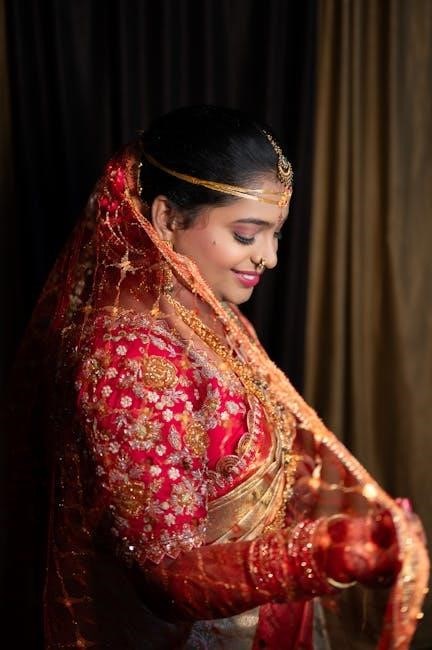
Key Characters in Blood Wedding
The Bride‚ Bridegroom‚ and Leonardo are central figures‚ each embodying tragic flaws. Their complex relationships and unyielding passions drive the play’s devastating outcome‚ shaped by fate and desire.
4.1 The Bride
The Bride is a central figure‚ torn between duty and love. Engaged to the Bridegroom‚ her heart belongs to Leonardo‚ creating a tragic conflict. Her internal struggle reflects societal expectations and personal desires. Limited by gender roles‚ she embodies the marginalization of women in Lorca’s portrayal of traditional Spanish culture. Her fate is sealed as she navigates a world where choice is futile against destiny.
4;2 The Bridegroom
The Bridegroom is a man of duty‚ adhering to societal expectations and destined for an arranged marriage. His character represents tradition and obligation‚ contrasting with the passion of Leonardo. Though unaware of the Bride’s true feelings‚ he is drawn into a tragic cycle of fate. His role highlights the rigid societal norms of rural Spain‚ where individual desires are sacrificed for familial honor and cultural expectations.
4.3 Leonardo
Leonardo is a passionate and conflicted character‚ driven by his forbidden love for the Bride. His presence ignites tension‚ as he is part of a feuding family. Despite societal norms‚ he pursues the Bride‚ leading to tragic consequences. His actions are fueled by desire and a sense of inevitability‚ making him a central figure in the play’s emotional and violent climax.
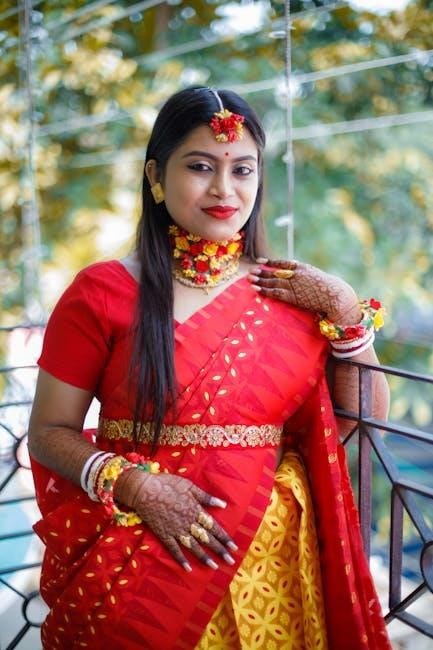
Cultural and Folkloric Elements
Blood Wedding richly incorporates rural Spanish culture and folklore‚ creating a vivid backdrop that enhances the tragic narrative and emotional depth of the story.
5.1 Rural Spanish Culture
Blood Wedding is deeply rooted in rural Spanish culture‚ reflecting the societal expectations and traditions of Andalusia. The play portrays a close-knit village community where honor and duty dominate. Lorca’s vivid depiction of summertime in a rural setting highlights the harsh realities of life‚ governed by strict gender roles and familial obligations. These cultural elements are central to the tragic narrative‚ offering insights into the societal pressures that shape the characters’ destinies. The PDF versions of the play often include analyses of these cultural influences.
5.2 Folklore Influences
Folklore deeply influences Blood Wedding‚ as Lorca incorporates symbolic elements like the moon and forest‚ reminiscent of traditional Spanish tales. The play’s tragic fate and emotional intensity reflect folklore’s fatalistic themes. Characters’ actions are often driven by instinct and superstition‚ typical in folklore narratives. The PDF versions highlight how Lorca blends folklore with dramatic storytelling‚ creating a sense of inevitability and timeless human struggle‚ enriching the play’s cultural and emotional depth.
Federico García Lorca’s Style
Lorca’s poetic prose and emotional depth shine in Blood Wedding‚ blending lyricism with dramatic tension. His style captures the essence of Andalusian culture‚ available in PDF formats.
6.1 Use of Lyricism and Drama
Federico García Lorca masterfully blends lyricism and drama in Blood Wedding‚ creating a poetic yet intense narrative. His dialogue is rich with emotional depth‚ while dramatic tension builds through tragic events. The play’s rural Spanish setting is vividly portrayed‚ enhancing its cultural authenticity. Lorca’s style captivates readers‚ making the PDF version a compelling resource for exploring his artistic vision and the emotional journey of the characters in this timeless tragedy.
6.2 Symbolism in the Play
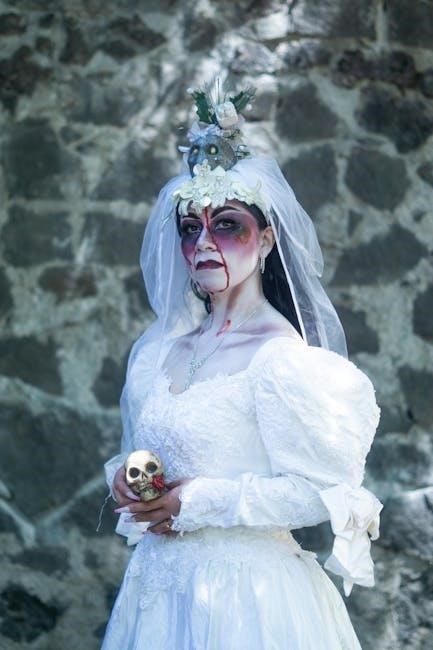
Federico García Lorca’s Blood Wedding is rich in symbolism‚ with elements like the moon‚ blood‚ and natural imagery representing fate‚ passion‚ and tragedy. The moon symbolizes tension and inevitability‚ while blood embodies both life and death. Lorca uses these symbols to explore deeper themes of human conflict and societal pressures‚ creating a layered narrative that resonates emotionally. The PDF versions of the play highlight these symbolic elements‚ enriching the reader’s understanding of Lorca’s artistic vision.
Availability of Blood Wedding in PDF Format
Blood Wedding is widely available in PDF format for free download or purchase. Authorized editions ensure fidelity to Lorca’s original manuscript‚ offering readers accessible and authentic versions online.
7.1 Free Download Options
Federico García Lorca’s Blood Wedding is available for free download as a PDF from various online platforms. Translations‚ such as Ted Hughes’‚ are accessible alongside the original Spanish text. Many websites offer free versions‚ though some may require registration. Platforms like Perlego provide access to an unlimited library‚ including academic resources. Authorized editions ensure the text remains faithful to Lorca’s manuscript‚ making it a reliable choice for readers and scholars alike.
7.2 Authorized Editions
Authorized editions of Blood Wedding ensure faithful adherence to Lorca’s original manuscript. These versions are meticulously revised to preserve the playwright’s intent and linguistic nuances. Available in PDF format‚ they are accessible for download through reputable sources. Authorized editions are ideal for scholarly study and casual reading‚ offering a reliable and authentic experience of Lorca’s tragic masterpiece.
Stage Adaptations and Performances
Blood Wedding has seen numerous stage adaptations‚ including a notable production at the Almeida Theatre in London‚ directed by Rufus Norris. These performances highlight the play’s dramatic intensity and emotional depth‚ drawing audiences into Lorca’s tragic world. Adaptations often blend traditional and modern elements‚ ensuring the play remains relevant and impactful.
8.1 Notable Productions
A notable production of Blood Wedding premiered at the Almeida Theatre in London‚ directed by Rufus Norris and featuring Gael Garcia Bernal. This adaptation captivated audiences with its blend of traditional and modern elements‚ bringing Lorca’s tragic tale to life. The production’s emotional depth and dramatic intensity highlighted the play’s universal themes‚ making it a memorable interpretation of the classic work.
8.2 Modern Interpretations
Modern interpretations of Blood Wedding often blend traditional elements with contemporary staging. Directors use multimedia and innovative designs to highlight the play’s timeless themes. Recent adaptations explore gender roles and societal expectations‚ resonating with modern audiences. These interpretations maintain Lorca’s emotional intensity while offering fresh perspectives‚ ensuring the play’s relevance in today’s theatrical landscape.
Critical Reception and Analysis
Blood Wedding has received widespread acclaim for its exploration of fate‚ societal constraints‚ and emotional depth. Scholars praise Lorca’s lyrical prose and tragic imagery‚ while audiences are moved by its haunting themes and violent yet poetic conclusion. The play remains a cornerstone of 20th-century theater‚ offering profound insights into human conflict and cultural identity. Its enduring relevance ensures continued scholarly and public admiration.
9.1 Scholarly Reviews
Scholars have widely praised Blood Wedding for its profound exploration of fate‚ societal constraints‚ and emotional turmoil. The play’s vivid symbolism and poetic language are often highlighted‚ with many noting its tragic beauty and timeless relevance. Lorca’s ability to blend lyricism with dramatic tension has solidified the work as a masterpiece of 20th-century theater. Academic reviews frequently emphasize its cultural significance and enduring impact on literature and performance studies.
9.2 Audience Reception
Audiences have been deeply moved by Blood Wedding’s emotional intensity and tragic beauty. The play’s vivid characters and poetic language resonate strongly‚ evoking powerful reactions. Its exploration of universal themes like love and fate ensures a lasting connection with viewers. Modern adaptations continue to attract diverse audiences‚ showcasing the timeless appeal of Lorca’s work and its ability to provoke reflection and emotional engagement across cultures and generations.
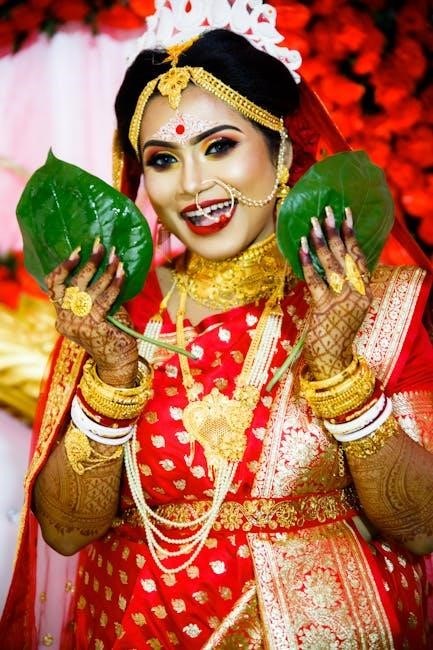
Educational Use of Blood Wedding
Blood Wedding is widely studied in schools and universities‚ with its PDF versions offering easy access for students. It enriches curriculum with themes of culture‚ fate‚ and human conflict.
10.1 Teaching the Play
Teaching Blood Wedding in educational settings involves analyzing its rich themes‚ cultural context‚ and dramatic structure. PDF versions of the play provide convenient access for students‚ facilitating deep exploration of Lorca’s lyricism and symbolism. Educators often use study guides and scholarly resources to enhance understanding‚ while discussions focus on themes like fate‚ love‚ and societal norms. This approach enriches students’ critical thinking and appreciation for theatrical literature.
10.2 Study Resources
Various study resources for Blood Wedding are available in PDF format‚ including scholarly analyses‚ study guides‚ and critical essays. These resources provide insights into themes‚ characters‚ and Lorca’s unique style. Authorized editions of the play‚ such as those translated by Ted Hughes‚ often include introductions and annotations‚ aiding deeper understanding. Additionally‚ PDFs with study questions and historical context are valuable tools for both students and educators analyzing the play.
Blood Wedding remains a profound exploration of human emotion‚ fate‚ and societal norms. Its availability in PDF formats ensures accessibility for readers worldwide. Through its rich themes and cultural depth‚ Lorca’s masterpiece continues to resonate‚ offering timeless insights into love‚ violence‚ and destiny. The play’s enduring popularity is a testament to its universal appeal and the power of Lorca’s lyrical storytelling.



Leave a Reply
You must be logged in to post a comment.